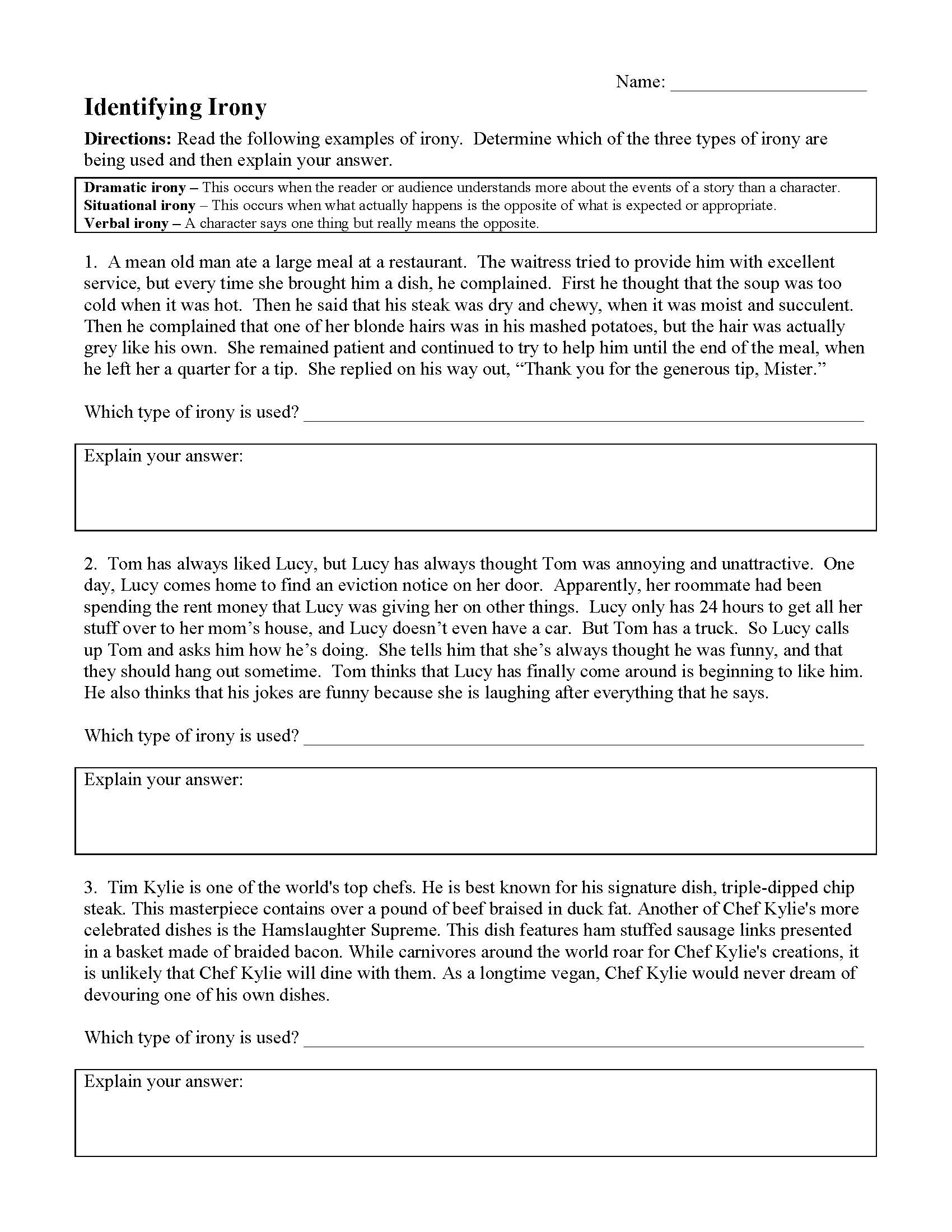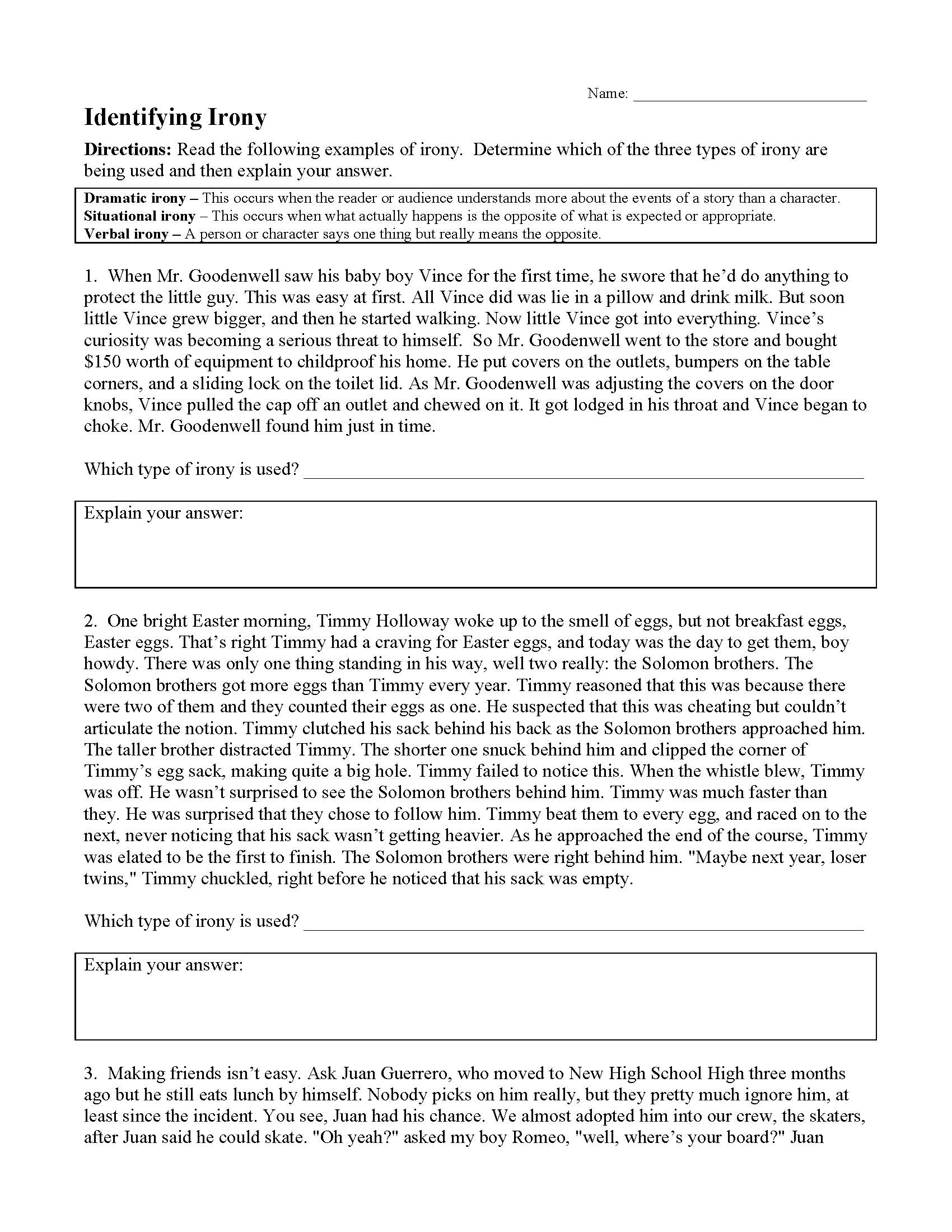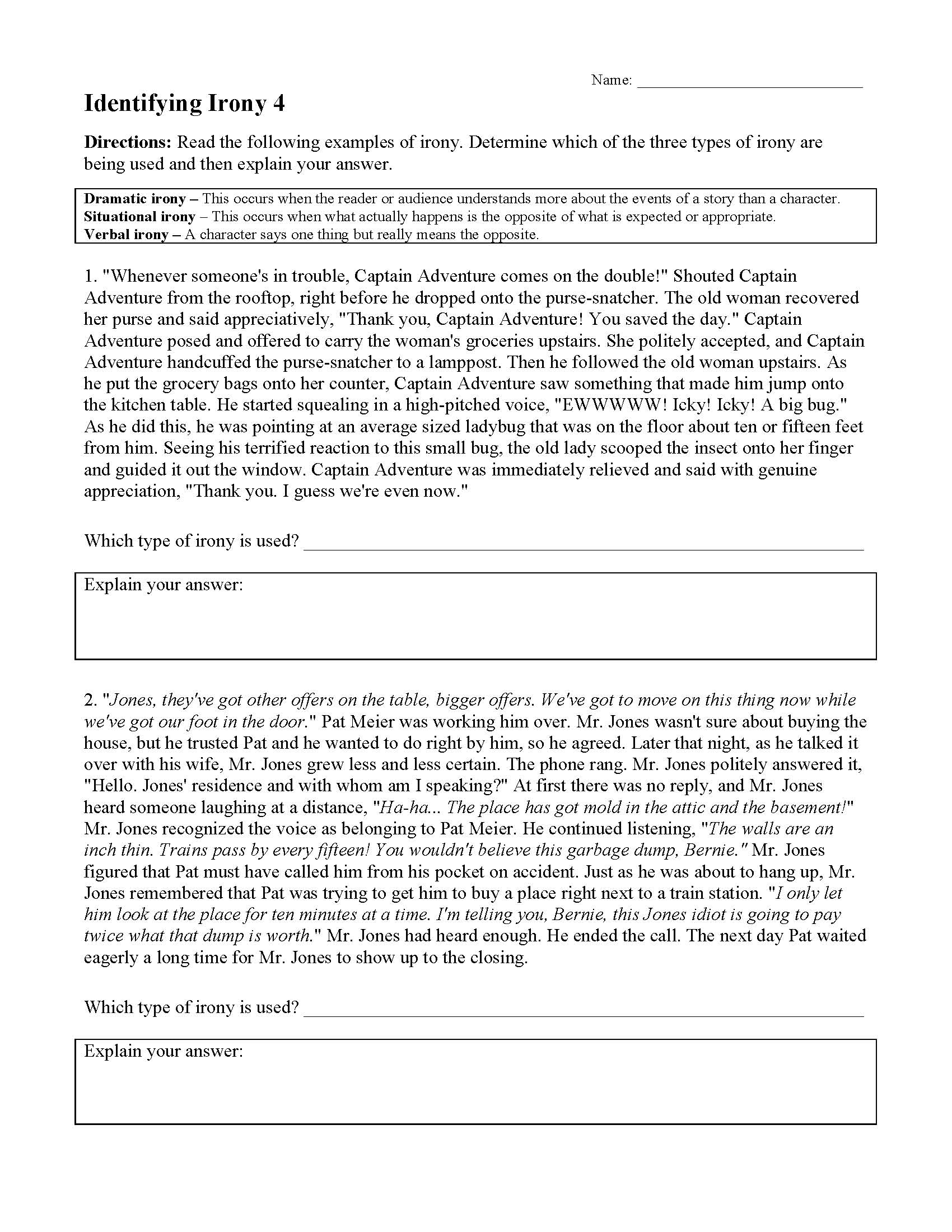Irony Worksheets
Irony is about expectations and opposites. I teach students that there are three types of irony. Verbal irony is when a character or person says one thing but means the complete opposite. This is more commonly known as sarcasm. Dramatic irony is when a character believes something and the opposite is true. The audience knows that the character is working under false beliefs. This can lead to hilarious or tragic situations. Situational irony is when the complete opposite of what is expected occurs. When most people think of irony, they are thinking of situational irony.
Of all the concepts with which my students struggle, irony may be the most challenging. These resources have been useful in my attempts, I hope that you may too find some use for these.







I hope that these irony worksheets and activities will help you or your students master irony. Irony is a tricky skill and it's really great to get some extra practice with it.

Irony
Common Core State Standards
RL.8.6 - Analyze how differences in the points of view of the characters and the audience or reader (e.g., created through the use of dramatic irony) create such effects as suspense or humor.
RL.11-12.6 - Analyze a case in which grasping a point of view requires distinguishing what is directly stated in a text from what is really meant (e.g., satire, sarcasm, irony, or understatement).
L.6.5 - Demonstrate understanding of figurative language, word relationships, and nuances in word meanings.
L.7.5 - Demonstrate understanding of figurative language, word relationships, and nuances in word meanings.
L.8.5a - Interpret figures of speech (e.g. verbal irony, puns) in context.
L.9-10.5a - Interpret figures of speech in context and analyze their role in the text.
L.11-12.5a - Interpret figures of speech in context and analyze their role in the text.
Search here.
71 Comments
Leave a Reply to MRS.Patterson Cancel reply
- Author's Purpose Worksheets
- Characterization Worksheets
- Conflict Worksheets
- Fact and Opinion Worksheets
- Figurative Language Activities
- Figurative Language Poems with Questions
- Genre Activities
- Irony Worksheets
- Making Predictions
- Mood Worksheets
- Nonfiction Passages and Functional Texts
- Parts of Speech Worksheets
- Poetic Devices
- Point of View Worksheets
- School Project Ideas
- Setting Worksheets
- Simile and Metaphor Worksheets
- Story Structure Worksheets
- Text Structure Worksheets
- Theme Worksheets
- Tone Worksheets
- ALL PAGES AND WORKSHEETS







Mohamed
/ May 15, 2023wonderful work and great support
Thanks
rgn
/ September 23, 2022Great andddd thank you so much for sharing.
Victoria
/ May 14, 2022Thank you for sharing! They are awesome!
Rosa
/ February 24, 2022This is always a hit! Thank you!
Barbara Lawrence
/ March 16, 2021Wonderful worksheets. Thank you so much for sharing them.
Olivia
/ August 15, 2019Great materials, Mr Morton!
Thank you for your generosity.
Fabio Schneider
/ March 26, 2019This is beyond my wildest dreams !
( I am ” a little exhausted ”
towards the end of an interesting school year – and here is all I need to get back in the game. Fantastic !
Have a wonderful day, Sir